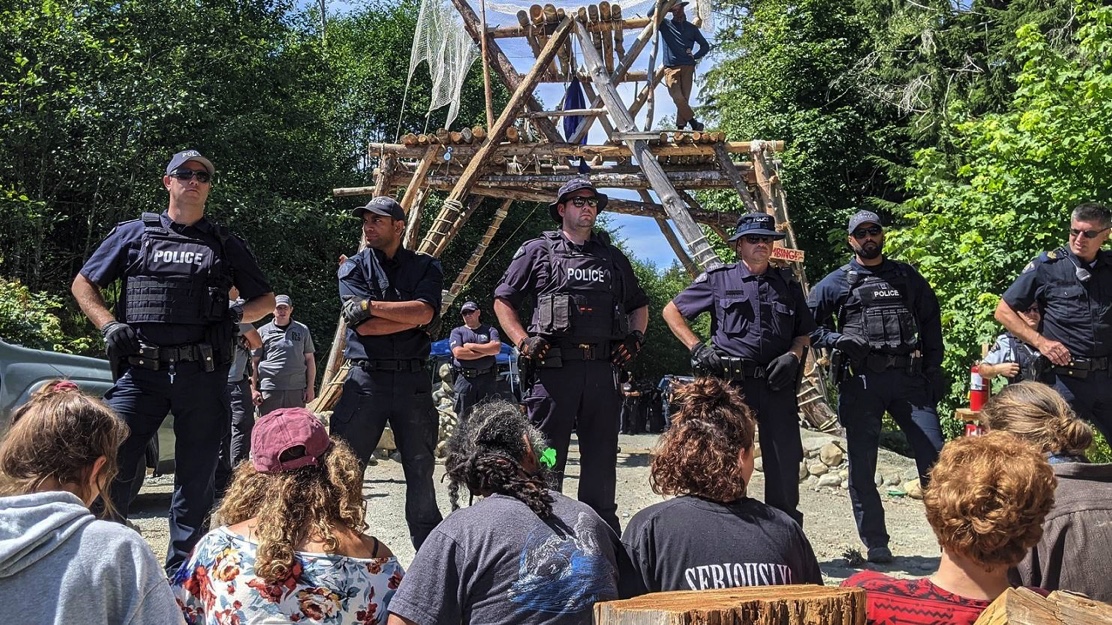“If I grab you, I’m going to take you,” he growls.
On a heavily forested logging road with no cell service as the sun sets, these words sound like something out of the script of a horror film. We’re a pair of journalists on assignment for Ricochet to cover the blockades and police actions in Vancouver Island’s Fairy Creek area, and we shouldn’t have to fear the police. Yet we find ourselves rushing to get away from whatever “take you” means.
More than 45,000 hectares of land on southwest Vancouver Island have been the site of conflict for the last year. Located on Pacheedaht and Ditidaht territory, the area includes a massive watershed that is home to hundreds of species, fresh running water, and trees that are over 2,000 years old.
For the Indigenous Peoples here, the land holds medicines and profound cultural significance, and the ancient cedars have seen countless generations use their bark without felling the trees. For tourists, the area contains ecological wonders unlike anywhere else on the globe. For locals, the area attracts tourism and feeds the economy. For the ecologically minded, the old-growth forest is vital to life on Earth as we know it. And for Teal-Jones, the forestry company that holds the logging licence, the trees are worth up to $20,000 apiece. Complicating matters is that logging offers some money to Indigenous Nations with few economic opportunities.
Old-growth forest can’t be replaced. Since last year, thousands of people have been camping in the trees to protect them. The RCMP have made hundreds of arrests, with some arrestees experiencing serious injuries.
A situation so heated and complex needs journalists to cover it.
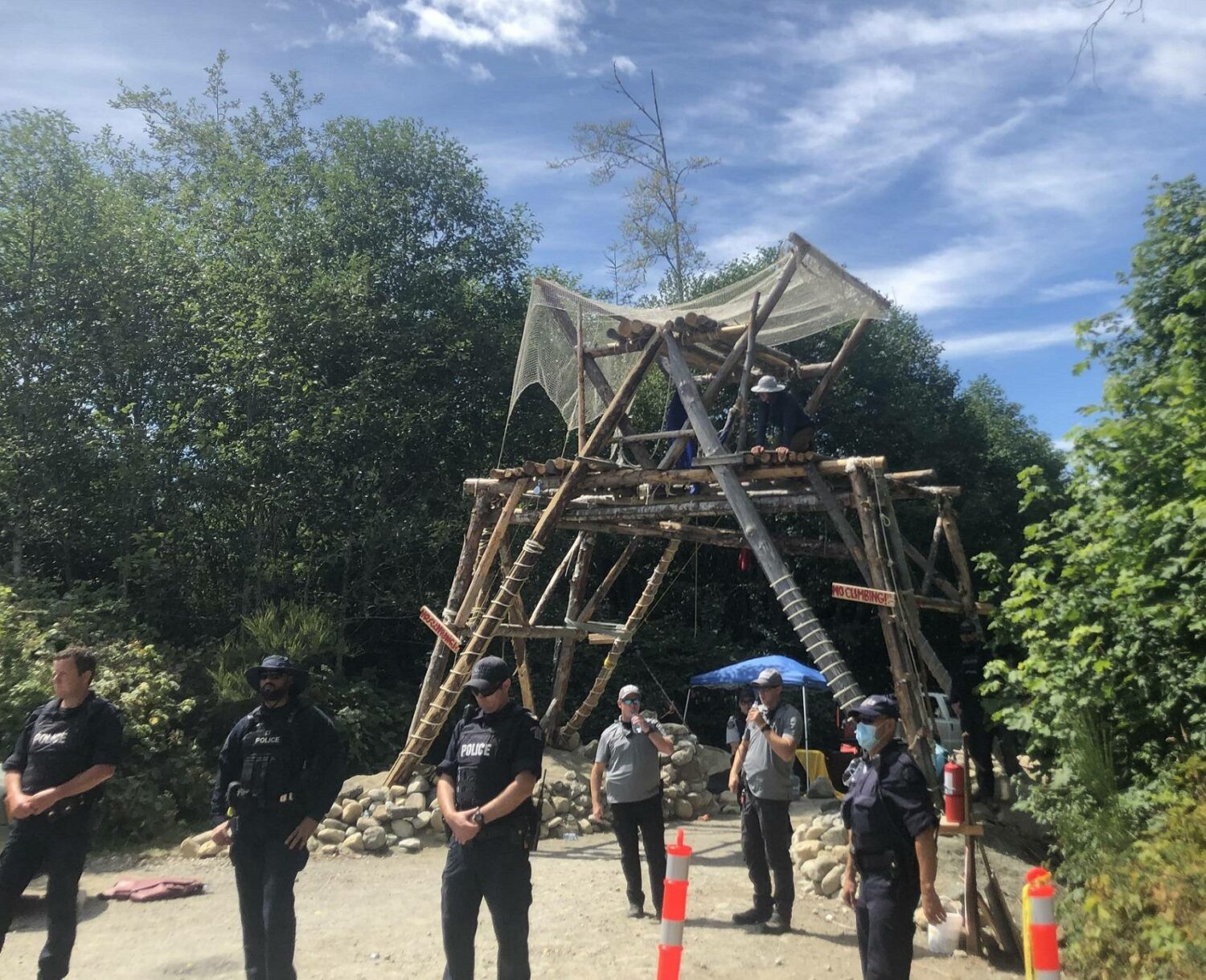
Creative blockades
On Monday, Aug. 9, the day had started off normally enough. We got up as the sun rose and drove to the checkpoint at Waterfall camp, one of several camps set up by forest protectors, ready to report on a small raid that we were told happens every Monday morning like clockwork.
Blockaders at Waterfall had complained that media were never around for these raids. We promised that we would be. When we arrived at the RCMP checkpoint outside Waterfall camp, the police asked us our reason for travel, then said conditions were unsafe. They turned us away due to “blasting” happening in the area. Frustrated, we returned to HQ, the forest protectors’ main camp, where we had been camping.
There are a variety of blockades, all constructed creatively with what is available. At Waterfall, a youth was chained inside a car and to a cement block so the car would not be able to move.
Shortly after we arrived, a raid began. Three specially trained RCMP tactical officers, on ATVs and with chainsaws in tow, pushed through the forest at high speeds to get around the car blockade, almost running over protestors. They were headed straight to River Camp, located seven kilometres up the steep logging road that runs through HQ. River and its neighbour Land Back camp proportionally have more participants who are Indigenous or people of colour.
RCMP helicopters and drones hovered over HQ and the surrounding camps as their occupants called out warnings to each other. The RCMP’s interference with liberties has been “substantial and serious,” according to a B.C. Supreme Court ruling in July on the Fairy Creek situation.
The situation stood in stark contrast to the celebration held over the weekend to mark the one-year anniversary of the Fairy Creek blockades. People had gathered at HQ to enjoy music, dancing, and a communal dinner.
Grandma Losah is an Indigenous Elder from the Tla’amin Nation. “I know that all the people that are on the front lines aren’t going to be able to make it into the city to be honoured so we are going to bring the celebration here,” she had explained to Ricochet during the anniversary party, referring to a march planned for Monday in Victoria, B.C. Many camp participants, including Grandma Losah, went to the province’s capital to take part in the march and present a petition to government calling for an end to old-growth logging.
The skeleton crew left behind at HQ made every effort to buy the blockade time as the Monday raid began.
Numerous forest protectors scrambled to lock themselves into the trenches and tripods, while others gathered at the HQ entrance to lock arms and create a human barricade.
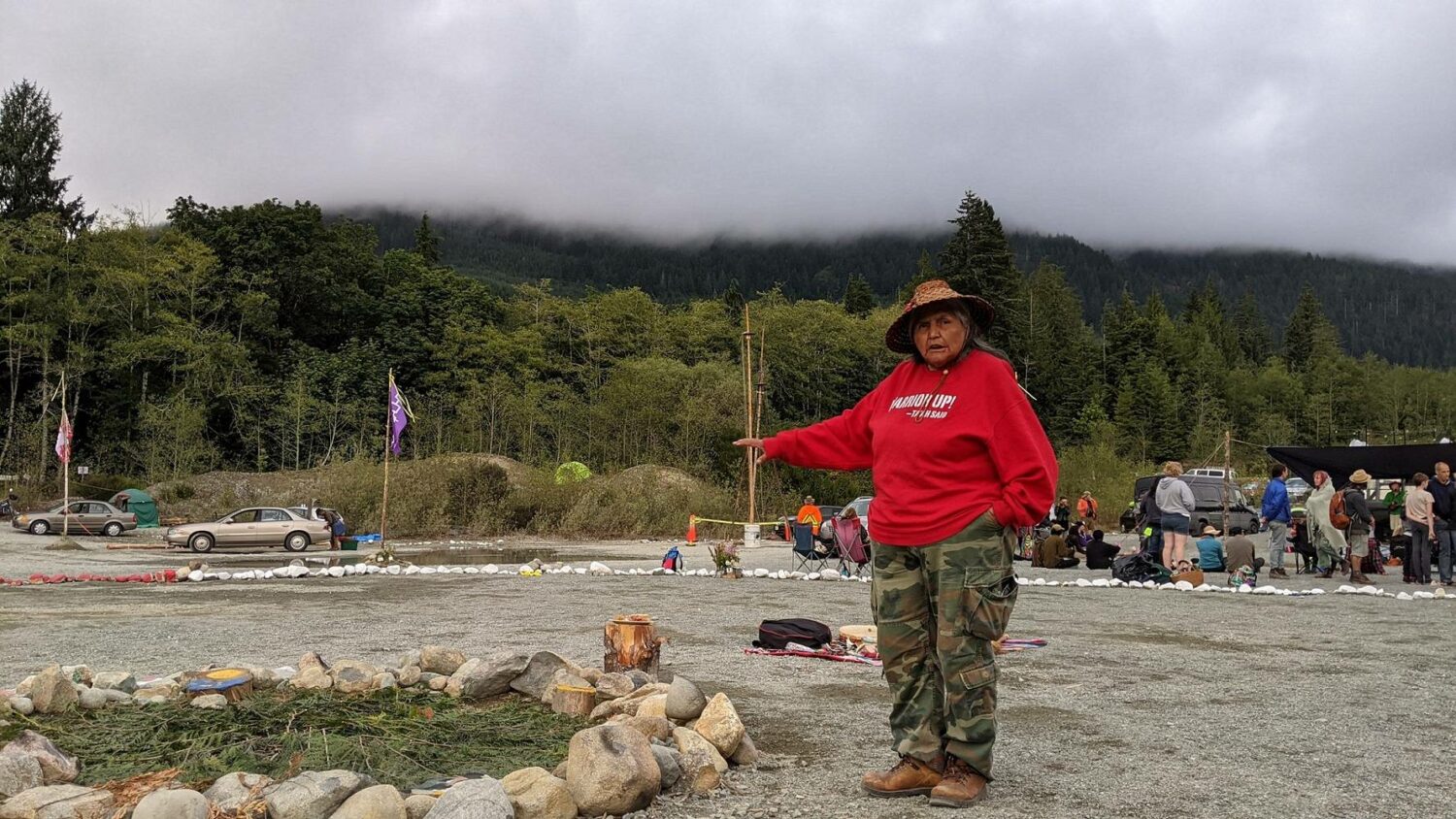
‘Stop killing Mother Earth’
With the hot sun beating down and temperatures in the high 30s, the forest protectors hurriedly erected gazebo tents to protect those sitting on the ground. RCMP officers formed a line in front of the human barricade, preparing to begin another day of arrests.
We couldn’t see names or badge numbers displayed on any of the officers’ uniforms, but many “thin blue line” patches were visible, attached to their bulletproof vests where their identification should have been. The controversial patches show a black and grey Canadian flag with a blue stripe running through it. The RCMP has ordered officers not to wear the patch while on duty.
It didn’t take long for the RCMP to remove the gazebo tents. Those who were not sitting with arms locked together grabbed umbrellas to try and protect people from the blistering heat. One person, using a spray bottle filled with water, started spritzing those on the ground. Another, holding a tray of fruit and what looked like dried seaweed, hand-fed those who couldn’t feed themselves, while another poured water into their mouths. People came here to protest, not to be tortured, one of the doctors told us. She described the conditions as inhumane.
People sang the Women Warrior’s song for all the murdered and missing Indigenous women and girls. They also drummed and chanted about unity, love, and Indigenous sovereign territory.
“We’re here to help you. We’re here to help you and your children have a future. So, I pray that your leaders can understand a little bit, something from our people. Stop killing us. Stop killing Mother Earth,” said an Indigenous forest protector to RCMP officers.
“You’re here to protect the corporation that wishes to continue to kill her, continue to stab her and rape her and kill her. That is terrible. We’re here on our love for the children to care for your children’s future. When you come here with violence and oppression on unceded lands, unceded territory of the Ditidaht and Pacheedaht people, you’re breaking your own laws.”
The RCMP’s interference with liberties has been “substantial and serious,” according to a B.C. Supreme Court ruling in July on the Fairy Creek situation. People can visit this public land, and so long as they do not block any roads, they are within their rights to do so. Unfortunately, the RCMP have largely ignored that ruling, and continue to conflate human presence on the land with criminality.
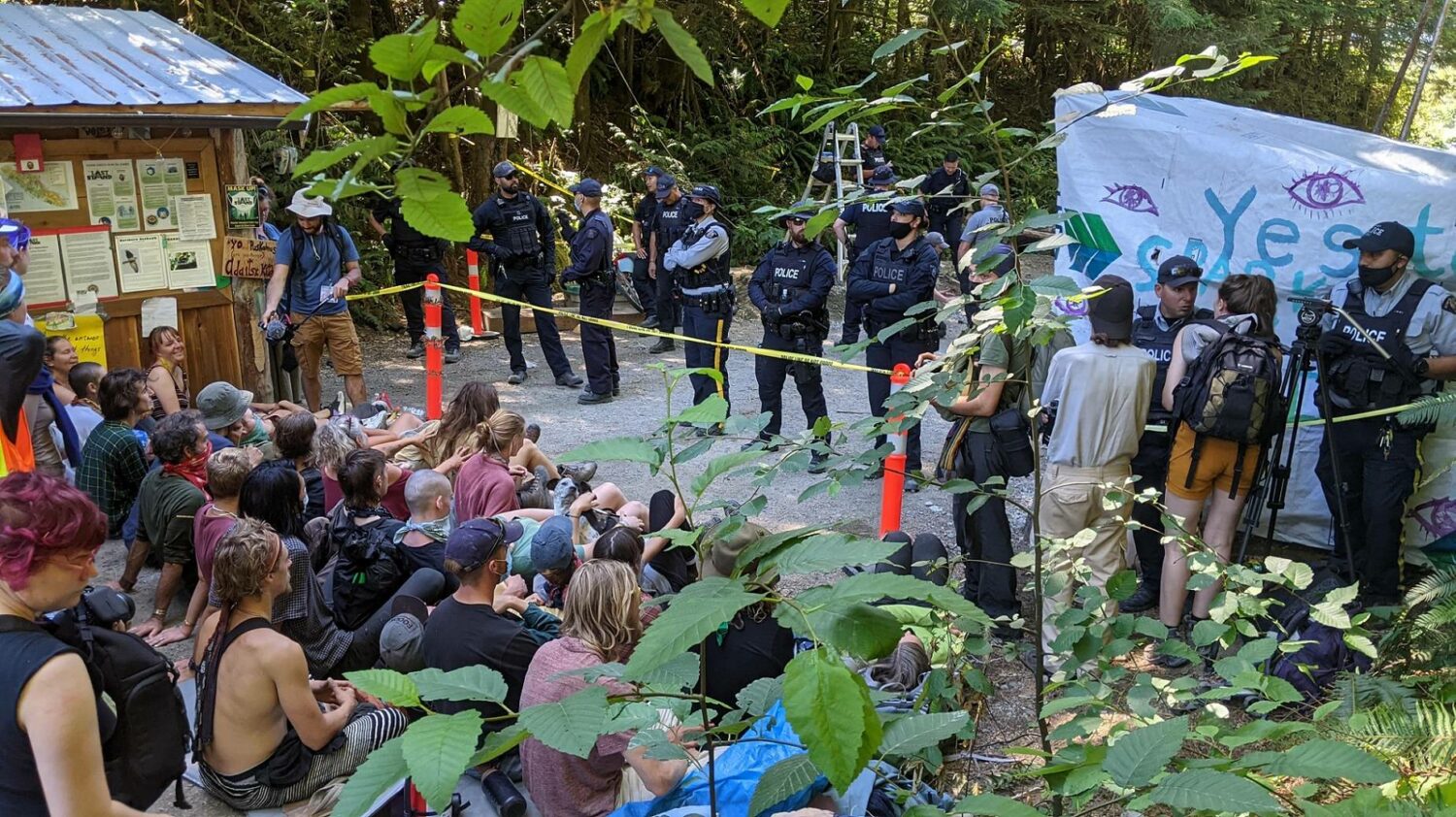
RCMP officers started making arrests, roughly pulling people away from the ends of the human chain and carrying them into police vans. The crowd chanted, “Who keeps us safe? We keep us safe!”
“You see what they do. They take our Indigenous matriarchs first. They know that’s where the power is held,” another Indigenous forest protector yelled to the crowd as the police made more arrests. Deviating from their pattern of picking off people at the ends of the chain, they grabbed a Black man from the middle.
After over an hour in the sun, many forest protectors started showing signs of overheating, their backs slick with sweat. Two doctors, a husband and wife who came to the blockade to help those in need of medical care, voiced their concerns to the RCMP.
People came here to protest, not to be tortured, one of the doctors told us. She described the conditions as inhumane.
Those who were arrested sat in RCMP police vans with no ventilation in the hot sun, some for hours. The volunteer doctors left the barricade to tend to a young Indigenous woman who stumbled as she was brought out of the police van, almost keeling over. The doctors informed the officers they were taking her to a hospital. No one argued with them as they loaded her into their vehicle and drove away.
The swift RCMP advance into HQ on that Monday morning ultimately led to chaos. The camp’s only source of internet was taken. Hundreds more people were arrested over the course of this latest incursion, bringing the total number of arrests since enforcement began in May to almost 800. Those who had travelled to Victoria would return to find police prohibiting re-entry, preventing them from gathering their belongings or checking on loved ones. Outside the police gate, we found one man begging police to be allowed to go in and gather his daughter’s medications.
As has been the case throughout the last few months, the police told journalists where we could stand and when we could report, severely limiting our ability to do our jobs.
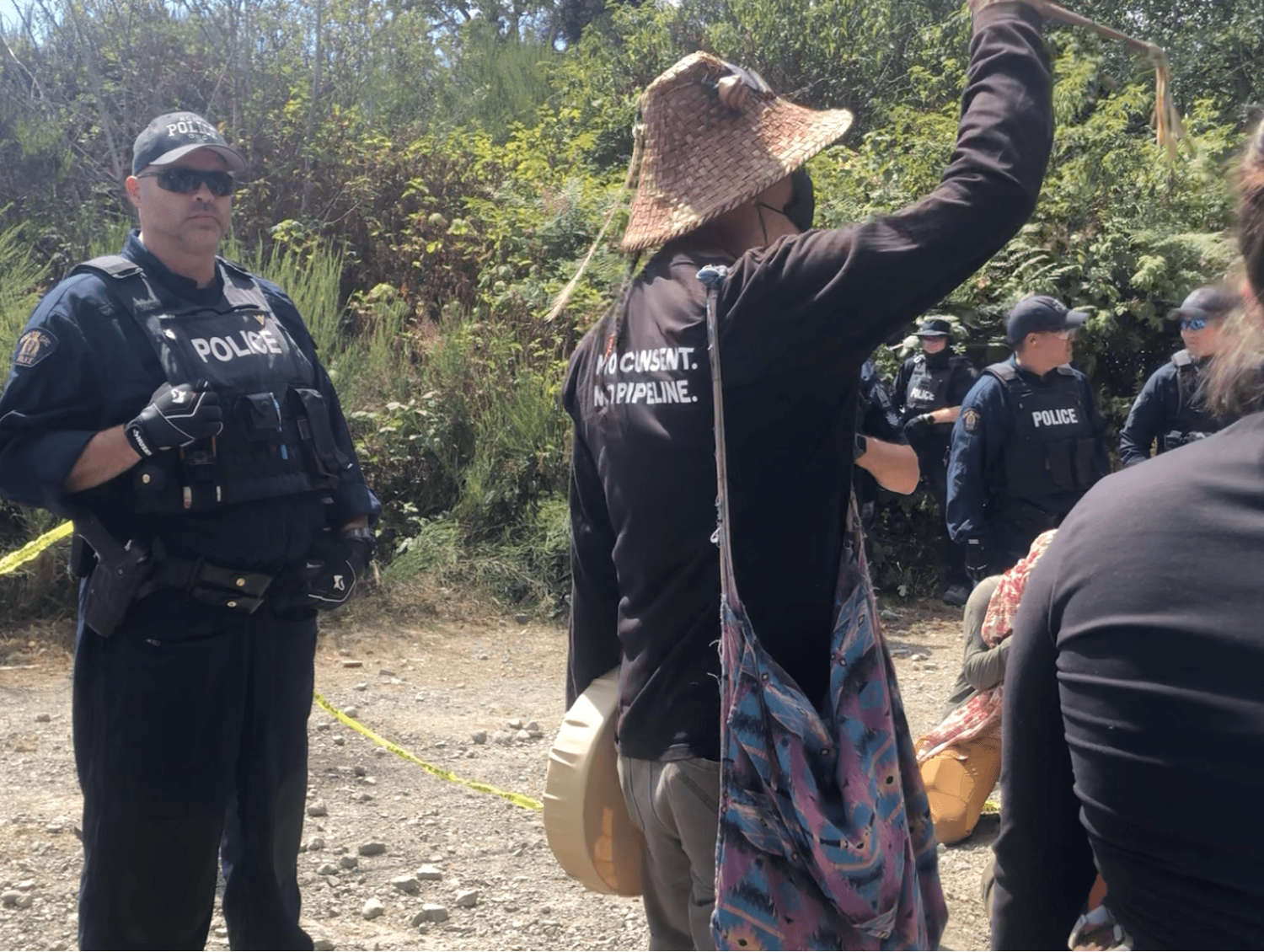
Media refused
On Wednesday, we try to visit HQ, but the police deny us media access. The RCMP liaison at the police-installed gate insists we need an “escort” in order to enter, but no one is available to escort us.
Canadians are used to hearing about journalists being targeted and arrested for doing their jobs in repressive countries, but media access in our own backyard has become a global concern.
The B.C. Supreme Court’s July ruling found that the broad exclusion zone and associated restrictions on journalists being implemented by the RCMP at Fairy Creek were unlawful. A coalition of press organizations, including Ricochet, took the RCMP to court over the issue of media access and won.
This is why we find ourselves far from the comforts of our homes. We wish we were here to report solely on the story unfolding in these woods. Instead, we have an additional story to cover: Did the court decision do anything? Has the treatment of journalists and media access improved? For the most part, the RCMP has ignored the ruling and continued to restrict access.
A media liaison officer would later tell us that in response to the court ruling, police were no longer escorting journalists, but rather “guiding” them. We asked if that meant we could enter the area without a guide. He laughed and said no. He also told us that the police know what the July court decision says and are “reviewing” it.

‘It’s illegal because I’ll arrest you’
After we are refused access to HQ on Wednesday, we turn to Plan B: visit Waterfall camp. We haven’t been there in a few days, and we want to see how protesters’ spirits are holding up, and what the police presence is like.
We drive up the quiet road that will take us to the isolated camp. Our car is almost out of gas and can’t manage the steep trail and exposed rock. We pull over and start walking the final kilometre. Daylight fades quickly. This hike is our final chance of the day to get more information out to the wider world.
As we walk the last half-kilometre to Waterfall, an unmarked black truck stops in front of us. We’re used to this song and dance — we’ll explain that we’re journalists, share our intended destination, maybe even get a ride in the air-conditioned cab. We greet the two RCMP officers as we usually do, with disarming hellos and sweating hands. We’re doing nothing wrong. In fact, the courts have sanctioned our work here.
Now, though, one of the officers yells at us from the black truck. “You’re turning around.”
Clay approaches the passenger side, but before they can open their mouth to say anything, the officer has gotten out of his truck and is towering over them, still yelling.
Trying to buy time, Clay asks, rhetorically, if it is illegal for us to walk past him.
“It’s illegal because I’ll arrest you,” he says.
Struck by the circular reasoning, Clay asks the question again for clarity. He’s flustered, turning red. “Turn around now or I’ll arrest you!” He reaches to open the back of his truck. This is not the air-conditioned ride we were hoping for.
Now we’re walking away, fast. It’s impossible to run: the road is steep and full of holes and gravel over large exposed rocks.
The officer is hot on Aleisha’s heels, grabbing for her backpack.
“If I grab you, I’m going to take you!” he threatens repeatedly.
“Why would you do that?” Aleisha asks as she narrowly escapes his reach. It’s a good question. He does not answer.
Later that night, our hands finally stop shaking. The sound of the tide melds with an incredible starscape and the moon is a glowing sliver over the ocean. We’ve left the police zone for a break in Port Renfrew, a tiny coastal town with no cell service. The peace of this place makes the daily brutalities in the nearby trees almost incomprehensible. The officer’s words ring in both of our ears. He didn’t say, “I’m going to arrest you.” He said I’m going to take you.
If he had, there would have been no witnesses.
Our interactions with the RCMP have been unpredictable. Fifteen minutes earlier on that same drive to Waterfall, an unmarked black truck pulled up beside our car. An officer leaned out the window asking us if we were media and if we were headed to the camp. We confirmed that we were. His expression was hard to read. A pause followed, as the officer appeared to be caught in mental calculations. To our relief, he smiled and said, “Okay. Safe travels.” He said it like he meant it, then the truck drove on, leaving us to the trees in a cloud of dust. The previous Saturday, we had even been given a ride to Waterfall camp, courtesy of the RCMP.
Yet today, we can’t get within half a kilometre of the camp without being arrested. The dizzying inconsistency is the only consistency we have found. The RCMP’s left hand does not appear to know what the right is doing. Either that, or we are actively being messed with.
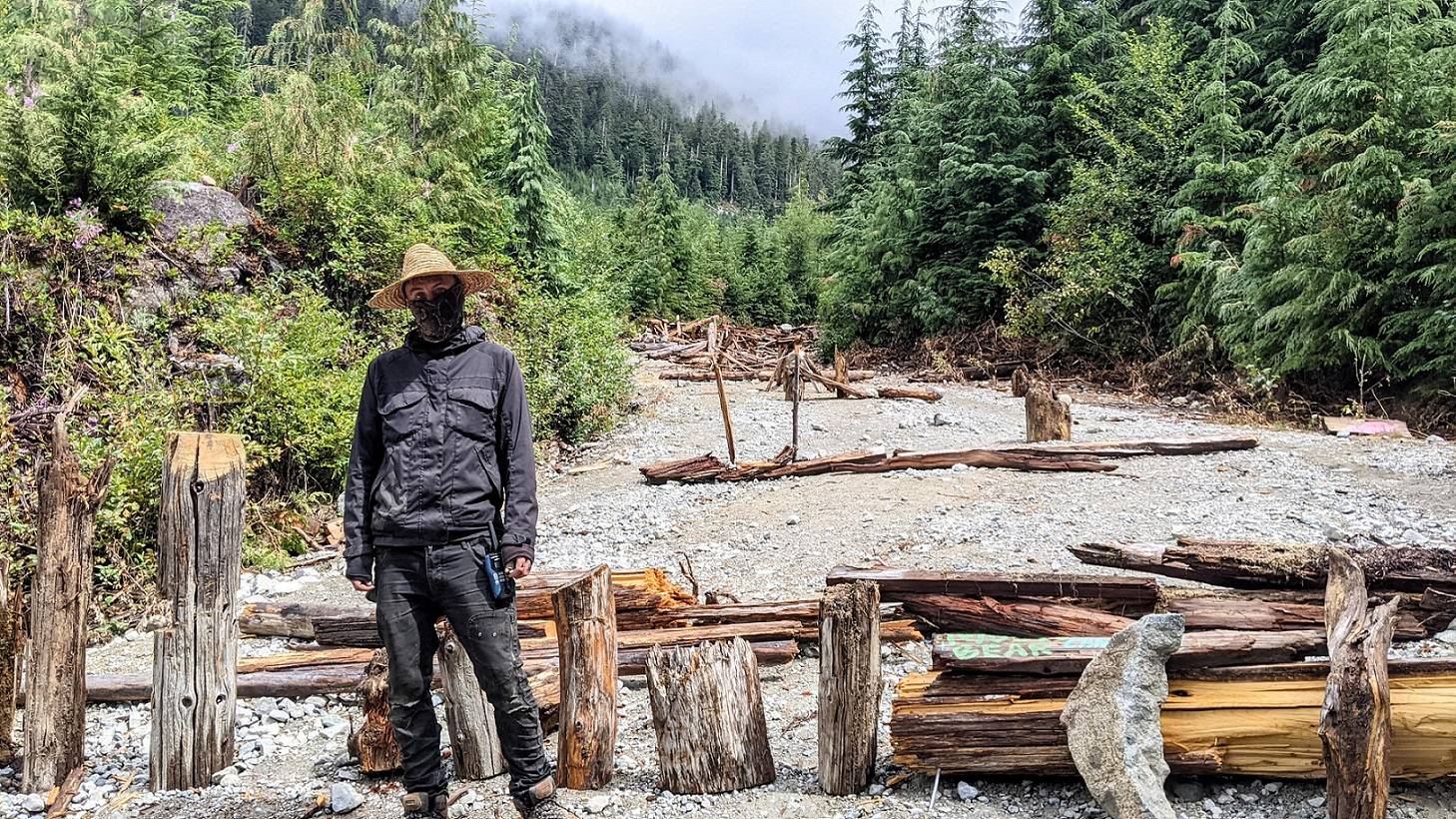
Frustration, futility and water bottles
On Thursday morning, we receive an apology from a police liaison at the gate of HQ. He says that he “didn’t know” that we were allowed in the camp unaccompanied. Yesterday, when we argued that we were, in fact, allowed to approach the camp, he told us that “those are the rules.” RCMP rules and Canadian laws, it seems, are not always the same thing.
The liaison explains that the “rules” were updated at an RCMP briefing on media access last night. This comes three weeks after the B.C. Supreme Court decision.
From now on, the officer promises, we will no longer need to be escorted. We are in the process of being escorted as he says this. He insists that what he is doing now is “guiding” us. Clay asks if we would be able to walk in on our own. The answer is no.
Despite this morning’s promises that today will be different, the day proves to be as frustrating and futile as many others. The difference is that the police politely offer us cold bottled water. It will be 41 C today, so we take the water.
What has played out over the week at HQ is a protracted battle between dozens of officers pushing the police line up the rocky road as protesters put their bodies on the line in towering tripods and cement hardblocks.
Now, we witness what could have been a deadly extraction from a tripod when the RCMP’s contracted cherry-picker machine breaks down and a tactical RCMP officer in green camo gets impatient. He decides to attempt an arrest by climbing up the tripod himself. We watch as the three thin logs shudder under his weight. The woman perched at least 30 feet up in the tripod sobs that she doesn’t want to die today. “Shut your mouth,” an officer tells her multiple times.
Over the course of two hours, we, and others, are marched two kilometres up the steep road in intense heat. We see elders shoved and yelled at as they attempt to carry water and their belongings with them. We see structures built by protestors and their belongings crushed beyond recognition under the claw of an excavator. People’s cars are seized.
As reporters, we are always watched by police officers, lest we attempt to move from our cordoned-off sections. They tell us “keep moving” while we’re being “guided” places. We are kept 50 to 100 or more feet away from extractions and can barely see or hear what is happening.
The police say this is for our “safety,” something journalists are accustomed to determining for themselves. At times, only one of us is permitted in the designated “media spot,” which is simply a piece of police tape tied between trees.
When we complain, we get shrugs, and we get bottled water.
This piece was originally published by Ricochet and appears here with permission.

